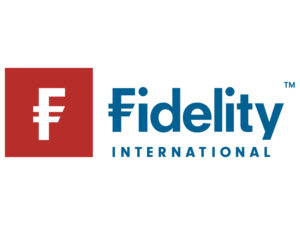 Fidelity International Review
Fidelity International Review
This is an independent Fidelity* review in which I look at whether it is the best investment platform in the UK. I look at Fidelity products (including the Fidelity ISA and the Fidelity SIPP), its services as well as Fidelity's charges and investment range. I have personally used the Fidelity Fundsnetwork platform (which is Fidelity's service platform for UK financial advisers) as well as the main Fidelity International platform (which is aimed at consumers) for almost two decades.
This article focuses on the consumer platform and as such is more of a Fidelity International review. In it, I will cover the positives and negatives of Fidelity, as well as some frustrations I have experienced when using the platform. You can use the links below to skip to key sections within this Fidelity review, but I recommend that you read it from beginning to end.
- What can you invest in using Fidelity?
- How does the Fidelity platform work?
- Fidelity Investment ISA account summary
- Fidelity SIPP account summary
- Fidelity customer reviews
- Summary – Should you use Fidelity?
- Fidelity Alternatives
1 minute summary - Fidelity Review
- Fidelity* will cover exit fees up to £500 per person. Terms and conditions apply
- Invest with Fidelity from as little as £25
- Wide range of products including Stocks and Shares ISA, Personal Pension (SIPP), Junior ISA, Junior SIPP and General Investment Account
- Fees range from 0.20% to 0.35%. No fees payable for investments over £1 million
- Good value platform for those with a portfolio under £250,000
- No service fee for Junior ISA or Junior SIPP
- Viable alternatives include Interactive Investor, Hargreaves Lansdown, AJ Bell and Bestinvest
Who is Fidelity International?
Fidelity Investments was founded in 1946 and in 1969 it launched an international arm, now known as Fidelity International. Fidelity International has over 2.84 million clients globally (around 1 million of which are in the UK) and is responsible for around £705 bn of client assets. To give this some context Hargreaves Lansdown, which has the largest share of the UK consumer platform market, has 1.8 million clients and is responsible for around £142 bn of assets. Comparing Fidelity vs Hargreaves Lansdown there are some notable differences between these two platforms. For example, Fidelity International advises on and administers employer pension schemes. Fidelity also has an investment platform, called the Fidelity Fundsnetwork, through which UK financial advisers can invest and manage their clients' money whereas Hargreaves Lansdown does not offer such services, given that it is, in fact, a financial advisory firm in its own right. While Hargreaves Lansdown does manage a few of its own funds, its internal fund range is much smaller in size compared to Fidelity's in-house fund range.
Fidelity account types
Fidelity's online platform allows investors to invest in investment trusts, unit trusts and ETFs via each of the following Fidelity account types:
Fidelity Stocks and Shares ISA
A Fidelity Stocks and Shares ISA* allows you to invest in a tax-efficient manner. Investments can be made up to the current annual ISA allowance of £20,000 (2024/25 tax year). A regular savings Fidelity Investment ISA can be started for as little as £25 per month. Via a Fidelity ISA, you can invest in a range of funds, unit trusts and ETFs. Transfers in are accepted for existing Stocks and Shares ISAs held with other providers.
Fidelity Junior ISA
With a Fidelity Junior ISA, parents and guardians can build up a lump sum in a tax-efficient wrapper that can be accessed by the child once they reach the age of 18. Investment can be made up to the current Junior ISA allowance of £9,000 for the 2024/25 tax year. There is no charge for funds held in a Junior ISA account and a regular savings Fidelity Junior ISA can be started with as little as £25 per month. Again, you can invest in a wide range of funds, ETFs and Investment trusts and transfers in are accepted for existing Junior ISAs held with other providers.
Fidelity SIPP
A Fidelity Self Invested Personal Pension (SIPP)* is aimed at those saving for retirement and can be started with just £25 a month. You can contribute as much as you want into a pension each year, however, you will only receive tax relief up to £60,000 (or 100% of your salary, whichever is lower).
Tax relief at 20% is automatically added to the investor's SIPP and if you are a higher or additional rate taxpayer then further tax relief is available through your self-assessment tax return. You can begin withdrawing from your pension at age 55. As per the Fidelity Junior ISA and Fidelity Stocks and Shares ISA you can invest in unit trusts, investment trusts and ETFs. Pension transfers are accepted from existing pensions with other providers but it always advisable to seek professional financial advice before considering a pension transfer.
Fidelity Junior SIPP
A Fidelity Junior SIPP allows investment by a parent or guardian to be made on behalf of a child that will start to build a fund for their future retirement. There is an added benefit of tax relief of 20% on annual contributions of up to £2,880, therefore, increasing the annual investment to £3,600. Once the child reaches the age of 18, control over investments passes to them. There is no charge for funds held in a Junior SIPP account and a regular Fidelity Junior SIPP can be started for as little as £25 per month. If you are interested in knowing more about Junior SIPPs then check out our article ‘Best and Cheapest Junior SIPPs‘.
Fidelity International Trading Account
A general trading account allows you to invest in a wide range of funds, ETFs and Investment trusts with no upper limit to the investment amount outside of any tax wrapper. That means any income or gains are liable to income tax and capital gains tax. Again, you can start a regular savings plan with as little as £25 per month.
Other services
Fidelity Retirement Service
Fidelity specialist advisers are available to assist in all elements of retirement planning including what to do with multiple pension pots and taxation. Meetings can be arranged face to face or by telephone to ensure you get personalised expert advice when you need it most.
Fidelity Advice
Fidelity provides personalised financial advice aimed at people aged between 18 and 79 with a minimum of £100,000 to invest and who are looking for long-term financial advice. It charges 1% for investment advice on ISAs, SIPPS and general investment accounts, subject to a minimum fee of £4,000, capped at a maximum fee of £10,000. In addition, it charges 0.5% of the amount invested per annum (payable monthly in arrears and deducted automatically from the investment) It has a minimum fee of £1,000 and a maximum fee of £10,000.
Fidelity Wealth Management
Fidelity Wealth offers a range of additional wealth management benefits for customers with larger accounts (£250,000+). Access to a personal relationship manager to provide guidance on investment strategies, fund selection and portfolio administration and more. Fidelity Wealth clients enjoy a low service fee with no further fees charged once your portfolio reaches £1 million (Meaning your fees are capped at £2,000 per year).
Fidelity Wealth clients can also receive invites to complimentary events providing insights and perspectives from leading investment experts as well as quarterly portfolio reports showing how their funds are performing. Fidelity Wealth automatically extends all its benefits to everyone in a household who invest with Fidelity regardless of the investment amount.
What can you invest in using Fidelity?
Fidelity offers investment in funds from more than 100 of the leading UK fund managers as well as a range of ETFs and Investment trusts. Fidelity now allows you to invest in shares, something you have been unable to do in the past.
Investment choices can be made in the following ways. I explain how each works in more detail in the next section titled ‘How does the Fidelity platform work'.
Fidelity Navigator
Fidelity's Navigator tool (previously called ‘pathfinder') allows clients to choose a ready-made portfolio in line with their risk profile and whether they are investing for growth or income.
Fidelity Select 50
Fidelity Select 50 is a choice of 50 funds made by Fidelity experts updated twice a year in January and July. The Fidelity Select 50 funds can be sorted by a range of options according to investment preferences. Fidelity have also launched The Select 50 Balanced Fund where a balanced portfolio has been created using a selection from the Fidelity Select 50 funds.
Fidelity Investment Finder
If a client wants to make their own investment choices then the Fidelity Investment Finder allows them to sort, filter and compare over 3,000 funds, ETFs, Investment Trusts and even Shares to create their own personalised portfolio.
How does the Fidelity platform work?
Fidelity Fundsnetwork works like most other investment platforms. You can open an account online pretty easily as long as you have:
- Your National Insurance number
- Debit card details – if you plan to invest a lump sum
- Bank or building society details – if you planning to invest regularly by direct debit
Once you have chosen the type of account you want (Fidelity ISA, Fidelity SIPP, Junior SIPP, Flexible Investment Account or Junior ISA) you then have to choose what to invest in. If you need help choosing what to invest in then Fidelity has a ‘Navigator' tool that could help guide investors to a ready-made fund solution. You'll need to choose whether you are investing for income or growth, how you would like your money managed (Cost or expert focused) and the level of risk you are comfortable with.
Investors can build neat fan-charts of their possible future returns based before being steered towards an actively managed Fidelity fund or cheaper passive Fidelity fund.
With the range of robo-advice propositions in the market such as Nutmeg, Wealthify and Moneyfarm, Fidelity has its work cut out competing with these services. Partly because these robo-advisers online and mobile app interfaces are far slicker but also because they are often cheaper. For example, if you were investing for growth and wanted someone to manage the money for you then the Fidelity Navigator tool would suggest the Fidelity Multi Asset Open Adventurous fund. This has an overall annual cost (including Fidelity's service fee) of 1.04% before we include the underlying transaction costs within the fund which can be up to 0.08% a year. Compare this to Nutmeg's equivalent fully managed portfolio annual cost of 0.97% (which includes typical transaction costs) and you can see that Fidelity's managed single fund solution is expensive.
Fidelity's passive fund solution is fairly keenly priced which keeps costs down to around 0.60% per annum (with additional transaction costs of around 0.06% a year) by investing principally (but not exclusively) in Fidelity's range of ETF trackers. But if you are particularly keen on simple cheap fund solutions then Vanguard's Lifestrategy funds, bought via the Vanguard investment platform cost 0.35% a year (if you have under £250,000) with additional transaction costs of up to 0.08% per year. However, if you have over £96,000 then the cheapest way to invest in Vanguard funds is via Interactive Investor. For more information read our Vanguard Investor review.
Where Fidelity comes into its own is if you want to pick your own funds. For those wanting a bit of guidance, Fidelity produces its Select 50 fund shortlist of funds it rates based on in-house research. It's Fidelity's equivalent to Hargreaves Lansdown's Wealth 50 list or AJ Bell's Favourite list. Alternatively, you can decide to research your own funds using the Fidelity Investment Finder.
There is a huge range of options including 2,965 funds, 177 investment trusts, 434 ETFs and 2,459 UK and international shares. You can screen by investment house, asset class, Morningstar rating, charges, management style, fund size, yield or geographical region. However, this is where Fidelity's site lets it down versus other platforms. Being able to perform research and compare funds is still a bit cumbersome and frustrating. If, like me, you carry out your own investment research and only use your investment platform to check fund details before transacting then much of these frustrations can be avoided.
The current site design looks as though it has been designed with tablets and mobile devices in mind rather than desktops. However, many investors prefer to use a desktop when making investment decisions and placing transactions. Online investment platforms aim to give a slick online experience which hides the fact that there is an army of administrators behind the scenes. However, with Fidelity, you get a sense that you are combating technical and administrative legacy issues that makes the online service slightly clunkier than it needs to be, especially when compared to other platforms such as Hargreaves Lansdown and Interactive Investor.
As a long-term user of Fidelity that can lead to frustrations when using what is otherwise a good platform. However, like many online consumer websites (such as Amazon) familiarity with them eventually mitigates some of the earlier user-frustrations and since its original redesign back in 2018, a number of improvements have been noted. Fidelity continues to be one of the most competitive platforms in terms of cost which I discuss in the next couple of sections and it is for that reason that many users will learn to live with some of the online frustrations which you hope will be ironed out in time.
Fidelity Stocks and Shares ISA summary
The Fidelity Stocks and Shares ISA* is supported by more than 45 years of experience in the investment market with over 1 million customers in the UK. It is quick and easy to open a Fidelity Investment ISA with access to investments 24/7 by telephone or online. Fidelity also offers a Fidelity Junior ISA where investments can be made for a child's future. The list of charges that apply to the Fidelity ISA are shown below. However, Fidelity's ISA charges compare favourably to other ISA providers, particularly if you have between £10,000 and £100,000 invested.
While not necessarily the cheapest they remain very competitive across this range of portfolio size. This is attractive because many platforms are only attractive to either high value or low-value portfolios. In this instance, as your portfolio grows in size with each annual ISA subscription it becomes advisable to move fund providers if you want to keep costs competitive. Fidelity's charges make that less of an issue plus they do not charge an exit fee if you wish to transfer your Stocks and Shares ISA to another provider at a later date.
Fidelity Investment ISA Fees
Annual Service Fee
£0 to £24,999
- £90 fixed fee without regular savings plan
- 0.35% with regular savings plan
- No service fee for Junior ISAs
£25,000 to £249,999
- 0.35%
£250,000 to £1 million
- 0.20%
Over £1 million
- No additional charge (fees capped at £2,000)
Note – All fees are charged on the entire portfolio across all accounts
Fidelity SIPP account summary
Fidelity SIPP* is a simple tax-efficient way to start saving for your own or a child's retirement. Much like the Fidelity ISA it offers a wide range of investment solutions. However, it is very competitively priced if you wish to invest in funds and have a portfolio of up to £250,000. The other provider with competitive costs across a range of portfolio sizes up to this amount is AJ Bell. As you'd expect the Fidelity SIPP offers drawdown when you get to retirement. The fees for the Fidelity SIPP are as follows:
Fidelity SIPP Fees
Annual Service Fee
£0 to £24,999
- £90 fixed fee without regular savings plan
- 0.35% with regular savings plan
- No service fee for Junior Pensions
£25,000 to £249,999
- 0.35%
£250,000 to £1 million
- 0.20%
Over £1 million
- No additional charge (fees capped at £2,000)
Note – All fees are charged on the entire portfolio across all accounts
Fidelity Trading account summary
Fidelity Trading account allows investment in a range of funds, ETFs, Investment Trusts and shares with no upper limit to the amount invested.
Trading Account Fees
Annual Service Fee
£0 to £24,999
- £90 fixed fee without regular savings plan
- 0.35% with regular savings plan
£25,000 to £249,999
- 0.35%
£250,000 to £1 million
- 0.20%
Over £1 million
- No additional charge (fees capped at £2,000)
Note – All fees are charged on the entire portfolio across all accounts
Fidelity also charges foreign exchange (FX) fees when dealing in international shares. The fee is tiered with investments up to £10,000 attracting FX fees of 0.75%, £10,001 to £20,000 is charged at 0.50% and FX fees of 0.25% are charged on investments over £20,000.
Fidelity Pros and Cons
| Pros | Cons |
|
|
Fidelity customer reviews
Fidelity International is rated as ‘Great' on independent review site Trustpilot scoring 4.4 out of 5.0 from over 5,100 reviews.
Fidelity ISA customer reviews
- ‘New site is really easy and clear to navigate and use. Love the personal approach to investing. I managed to open my ISA really quickly (in about 2 minutes!!), I should have done this a long time ago' – K
- ‘My experience of Fidelity have only ever been excellent. The reason I came here to post a review was a relationship manager who went an extra mile to get something sorted (thank you) and when I phone they are always helpful.' – CB
- ‘Excellent service over 10 years of ISA investments – constantly updated website, improving customer experience and displaying information in a simple and easy-to-understand format' – MG
Fidelity SIPP customer reviews
- ‘Although, there are slightly cheaper and reputable platforms available… none have been as simple and diverse as Fidelity.co.uk' – AA
- ‘I can't praise this company's customer service staff highly enough. In my opinion, they set the benchmark to which other companies should aspire' – NA
- ‘Really great information site, they made choosing a fund to invest in really easy' – HS
Fidelity Trading Account customer reviews
- ‘Received my latest Fidelity fund performance review. Sent timely. Pleased to see the funds are doing well and that they continue to be a well-run organisation. Good to see that the Special Situations Fund continues to do well' CB
- ‘I have had to research a switch of funds and found the research resources improved. Giving growth over 10, 5,1 and YTD, without having to look at the individual investment information ie allowing you to shortlist funds before looking at particular funds in detail' – H
- ‘In my opinion, the products and services at Fidelity are varied and tailor-made for individual needs. Their magazine is informative and I have always found their customer care service very helpful' – SL
Summary – Fidelity International review – Should you use them?
Fidelity* is one of the leading players in the UK platform space. If we start with the positives, Fidelity has a wide range of investment choices including ETFs and investment trusts. I was pleasantly surprised to see the range of ETFs available as this had previously been a space where there was a difference between Fidelity vs Interactive investor, one of the platforms favoured by more sophisticated investors (Check out our full Interactive Investor review). In terms of cost, Fidelity performs well against all the major platforms and is particularly attractive if you have a SIPP bewtween £25,000 and £250,000.
For many people, it’s a choice between Fidelity vs Hargreaves. If you want access to research, the ability to genuinely compare and chart funds then Hargreaves Lansdown wins. Plus I would argue that Hargreaves Lansdown's customer service record is also superior. However, if you want to simply invest in funds and shares, then Fidelity ticks most boxes and they don't lock you in with exit fees. It is broadly speaking one of the cheapest platforms for most people with a portfolio size of between £25,000 and £250,000, which makes life easier if you plan to continue to contribute to your ISA or SIPP (i.e you won't have to keep shopping around for the best price as your portfolio grows). The negatives are mostly functionality issues online which are improving as time goes on. In any event, if you carry out your own investment research prior to buying funds then you shouldn't be put off.
Fidelity Alternatives
For those looking for regular research communications, strong customer service, a wide investment choice (including share buying) and a seamless online (including smartphone app) experience then Hargreaves Lansdown remains the market leader. Having used both Fidelity and Hargreaves Lansdown I can understand why. You can read my full Hargreaves Lansdown review. Another viable alternative from a cost perspective is AJ Bell. You can read my AJ Bell review in full here. If you only ever plan to buy passive tracker funds then check out our review of InvestEngine and Vanguard Investor.
If a link has an * beside it this means that it is an affiliated link. If you go via the link Money to the Masses may receive a small fee which helps keep Money to the Masses free to use. But as you can clearly see this has in no way influenced this independent and balanced review of the product. The following link can be used if you do not wish to help Money to the Masses – Fidelity



